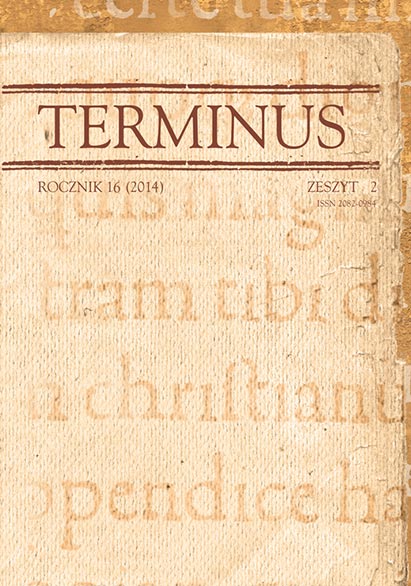Językowe obrazowanie w klasycystycznej poetyce dramatu we Francji na przykładzie Praktyki teatru François Hédelina d'Aubignac (1657)
The Linguistic Imaging in the Classical Poetics of Drama in France Illustrated with an Example of La Pratique du Théâtre by François Hédelin d’Aubignac (1657)
Author(s): Michał BajerSubject(s): Language and Literature Studies, Studies of Literature, Polish Literature
Published by: Wydawnictwo Uniwersytetu Jagiellońskiego
Keywords: poetics; classical drama in France; classical literary criticism; d’Aubignac
Summary/Abstract: Linguistic imaging in old literature is the subject of many studies, among which we list books recently released in Poland by Barbara Niebelska-Rajca (“Enargeia” i “energeia” w teoriach literackich renesansu i baroku, Warszawa 2012) or by Roman Krzywy (Wędrówki z Mnemosyne: stadium o topice dawnego podróżopisarstwa, Warszawa 2013). These studies, however, either gloss over the problem of linguistic imaging in drama, or treat drama as a marginal province of this phenomenon. Among texts devoted to drama and theatre (e.g. Françoise Siguret, L’Oeil surpris, Paris 1993; Emmanuelle Hénin, Ut pictura teatrum, Genève 2003), relatively little space is dedicated to the question of how drama theoreticians look upon linguistic imaging. The aim of this paper is, therefore, to fill this gap in the research to date. It presents an analysis of those parts of La Pratique du Théâtre (Paris 1657), a treatise by François Hédelin d’Aubignac (1604–1676), that concern description and imaging. The first part of the paper focuses on showing the tension intrinsic to d’Aubignac’s reflection on the place of descriptions in drama. While this 17th-century theoretician calls for permeating the text of a drama with utterances of a descriptive character, he also warns against excessive elaboration of such parts, as they could harm the dramatic action. The aim of further parts of the study is to reconstruct the basic ways of relieving this tension as proposed in La Pratique du Théâtre. In the second part of the paper, the author distinguishes three fundamental forms of imaging words discussed in d’Aubignac’s treatise: narration, description and pathetic speech. They appear to be three paradigmatic structures that focus on a broader spectrum of issues related to linguistic imaging in classical drama. At the same time, the theoretician’s reflection contains a distinct valorization of conciseness, thanks to which a limited number of short utterances perform as many functions as possible (namely, they are a description of a thing or event, and convey an expression of emotions at the same time). Further in the paper, the author concentrates on how to put together dramatic descriptions and a character’s mental life. Embedded both in a situation as well as in a character’s mind state, and expressed using appropriate linguistic figures, images have several functions: not only does their pictorial dimension allow the audience to reconstruct certain elements of the narrative world, but they also express the characters’ emotions and thoughts, thus facilitating understanding of the dramatis personae and plot. In this, d’Aubignac combines his reflection on dramatic description with some aspects of the rhetorical theory of figures, also elaborated on in La Pratique du Théâtre. Following Cicero and Quintilian, d’Aubignac says that figures have an expressive function too. Their presence in the descriptive parts of drama is, therefore, inscribed in the strategy of creating a character. Regardless of its specific function, the illustrative ability of dramatic language comes from the rhetorical theory of evidentia. To support this hypothesis the author analyses analogies between part of La Pratique du Théâtre containing a description of a ransacked city, and a fragment of Institutio oratoria, where a similar image illustrates Quintilian’s deliberations on evidentia. Dramatic texts must simultaneously comply with rhetorical criteria (they must convey enough information about various circumstances of the action) as well as dramatic criteria (they must be concise and embedded in the characters’ mental lives). Hence achieving a technically spotless merger of descriptive parts into the tissue of a drama seems to be nearly impossible. This proves that, despite its normative character, one of the fundamental assumptions of classical theory of drama is the acceptance of tiny compositional imperfections, given that they appear in a structure whose general silhouette remains in keeping with the requirement of rational poetics.
Journal: TERMINUS
- Issue Year: 16/2014
- Issue No: 4 (33)
- Page Range: 451-470
- Page Count: 20
- Language: Polish

